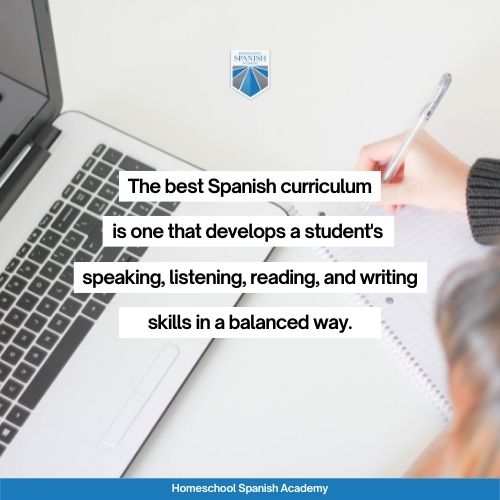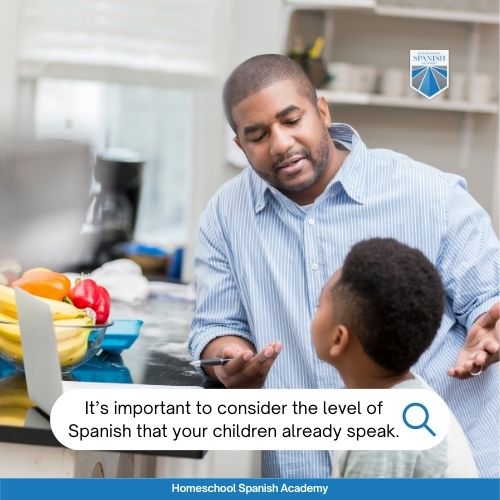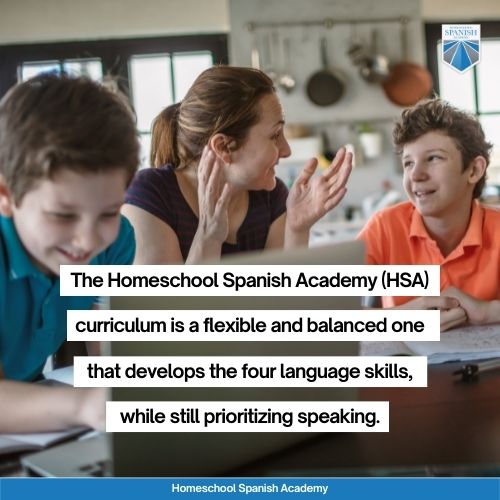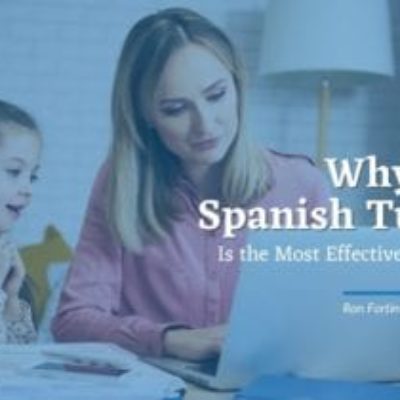
How To Choose the Best Spanish Curriculum for Your Kids
Learning Spanish is a door to a better future for your kids, as it’s a global language that’s easy to learn and highly regarded among professional recruiters. So, the question isn’t why your kids should learn Spanish, but which is the best Spanish curriculum for them?
Choosing the right curriculum for your kids matters greatly as an appropriate curriculum shapes how we understand a language and culture, it keeps students up with global trends, and it can even help you save money.
Professor James Dean Brown identified the six basic building blocks of any foreign language curriculum, and according to him they should require analysis, state goals and objectives, and include testing, materials, teaching, and program evaluation. He also classified syllabuses into different groups, and considered the techniques and exercises offered by the different curriculums.
Keep reading to learn what you need to focus on when looking for the best Spanish curriculum for your kids and get to know what your best options are.
Look For a Balanced Approach
As an experienced Spanish teacher, I can’t tell you how many times I’ve seen elementary Spanish curriculums and middle school Spanish curriculums focused on developing only speaking skills—neglecting the other three areas of language learning (listening, reading, and writing).
I understand the idea behind this approach: most people want to speak the language and they see this as their only goal.
However, you can’t properly speak a language if you don’t know how to read it or write it. The curriculums that focus on just one language skill are, by definition, limited and incomplete.
The best Spanish curriculum—no matter if it’s for preschoolers or for adults—is one that develops a student’s speaking, listening, reading, and writing skills in a balanced way.
This doesn’t have to mean “a lot of grammar,” but just the amount needed to actually understand the language and not only memorize a few catchphrases.

Identify Your Kid’s Learning Style
The idea shouldn’t be to choose the best Spanish program for kids, but the best Spanish program for your kids.
Every child has their own learning style, some are highly visual and need a lot of videos and graphics, others learn amazingly well just by reading, others need to play games and to be frequently challenged to keep their attention focused on the task at hand.
What’s your kid’s learning style?
Depending on your answer to this question, your search for the best Spanish curriculum will vary accordingly.
It doesn’t matter if you’re looking for a program for elementary school kids or an online Spanish curriculum for homeschool students, you need to look for a program where the teaching style matches your kid’s learning style.
The most outstanding Spanish curriculums in the market are equipped with the necessary tools to cover a wide range of different learning styles.
Look for the Spanish topics to teach in each curriculum and how they plan to teach them. The “how” here is very important—if you can see your kids learning the way that curriculum plans to teach them, then it’s time to give it a closer look.

Go for Flexibility and Support
If a curriculum includes videos, workbooks, games, books, and other different teaching techniques, then it’s adapted to manage different learning styles and has the flexibility to cover each student’s needs.
However, in the search for the best beginner Spanish curriculum it’s common to find programs that offer a pre-packaged Spanish set of activities and that’s all you will get.
It doesn’t matter how great these activities are or how deep they go if they don’t give your kids the support they need to understand them. Look for a program that offers a diversity of materials and the guided support needed to make the most out of them.
I’ve found out that a curriculum based on one-to-one lessons, with flexible scheduling, and diverse materials is the best choice as a private tutor can give your children all the attention they need while adapting their teaching style to your kids’ specific needs. Doing that in a bigger and shared classroom is much harder and I say that based on my own experience as a Spanish teacher.

Find the Right Level for Your Kids
Nowadays, there are so many language learning options in the market that it’s hard to find the right one for your kids’ specific situation.
Not all Spanish curriculums are created equally and you need to make sure that the one you choose it’s appropriate for your kids’ age and level.
If your kids are in middle school make sure the program you choose is appropriate for middle school kids. The same thing is true for high school students and every other level. A Spanish curriculum designed for preschoolers will use different resources and teaching techniques than one designed for elementary school students.
It’s also important to consider the level of Spanish that your children already speak. Try to identify if your kids are beginner, intermediate, or advanced students, and then look for a curriculum according to their level.

Look For a Curriculum That Fits Your Budget
As I said before, there are lots of options in the market, and each one offers a whole array of different features that try to differentiate them from the rest.
However, there’s no point in starting to work with a specific Spanish program if it simply doesn’t fit your budget.
Don’t let a fancy school or a spectacular website lure you in. You’re here for the long run, as learning Spanish is a process that takes its time. So, look for a program that’s cost-effective and offers good value for what it provides.
A smart way to compare the affordability of different Spanish curriculums is to look at their price per class, which gives you a detailed idea of the amount you’re actually investing in any specific program.

Choose the Right Spanish Curriculum for Your Kids
We have covered the reasons why curriculum matters and the elements of a good Spanish curriculum. I’ve also shared with you what you should look for in a Spanish curriculum before choosing it for your kids. Now, all you have to do is to go out there and choose the right one for them!
The Homeschool Spanish Academy (HSA) curriculum is a flexible and balanced one that makes a point of developing the four language skills, while still prioritizing speaking. Our one-to-one system allows for a lot of program flexibility, as our teachers adapt their classes to the students’ needs. HSA offers programs for all ages and levels, including preschool, elementary, middle school, and high school, and our prices are very competitive when you factor in the price per class element.

If you’re looking for the best Spanish curriculum for high school, take a look at our curriculum, and get Spanish on your child’s homeschool high school transcript. We have been providing reliable Spanish services for over 10 years, teaching more than 24,000 actively enrolled students, and can help you to find the program that better fits your needs.
Sign your child up for a free trial class with one of our certified, native Spanish-speaking teachers from Guatemala, and discover by yourself if the HSA one-to-one system is the right one for your kid.

Join one of the 40,000 classes that we teach each month and you can experience results like these

“HSA offers very affordable, quality, one on one classes with a native speaker. My son has greatly benefited from taking classes. We have seen his confidence increase as well as his pronunciation improve, because he learns from a native Spanish speaker. HSA has quick, personal customer service. I have appreciated the one on one interaction and teaching that my son gets from his teachers. He has gotten to know his teachers, which has increased his confidence in speaking Spanish. Our family has been very pleased with our experience so far!”
– Maple, Parent of 3

“This is the best way for your kid to learn Spanish. It’s one-on-one, taught by native Spanish speakers, and uses a curriculum.”
– Sharon K, Parent of 3

“HSA offers very affordable, quality, one on one classes with a native speaker. My son has greatly benefited from taking classes. We have seen his confidence increase as well as his pronunciation improve, because he learns from a native Spanish speaker. HSA has quick, personal customer service. Our family has been very pleased with our experience so far!”
– Erica P. Parent of 1
Want more free Spanish lessons, fun content, and easy learning strategies for kids? Check these out!
- 10 Homeschooling Styles You Need to Explore in 2023
- Local Learning Networks: Finding Homeschool Co-ops Near You
- Home Sweet Classroom: Creating Engaging Spanish Lessons at Home
- 10 Websites Offering Short Stories in Spanish for Beginners
- Can Homeschoolers Participate in Sports?
- 10 Tips for When Homeschool Isn’t Working
- Is There Homeschooling in Latin America?
- 10 Productive Back-to-School Activities for Your Spanish Class
- Language Learning with Netflix: How to Use the Chrome Extension - April 18, 2024
- 23 Common Spanish Prepositions You Can Use Today - March 27, 2024
- 25 Common Subjunctive Phrases in Spanish Conversation - March 21, 2024





